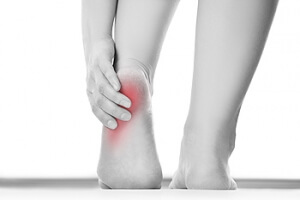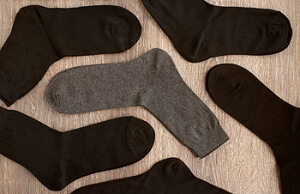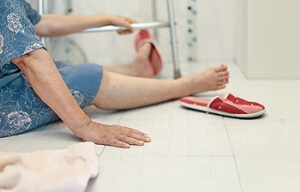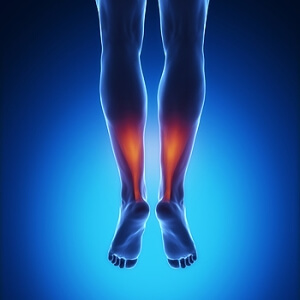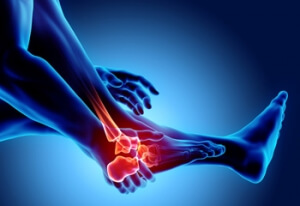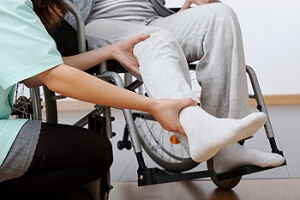Connect With Us
Featured Articles
Super User
How To Teach Your Child About Proper Foot Care
 Research has shown the importance of teaching children at a young age how to perform proper foot care. This process may begin with educating the child about their feet. For example, feet are comprised of 26 bones, and the strongest two are the heel bone and the talus bone. These bones carry the majority of the body’s weight as daily activities are pursued. Additionally, proper foot hygiene is important to learn and practice daily, and this may prevent certain uncomfortable foot conditions from developing. This may be accomplished by washing and drying the feet thoroughly every day, walking barefoot in the house, which may aid in helping to spread the toes out, and learning how to trim the toenails properly. Additionally, it’s important for the child to notice any pain or discomfort in their feet, which may be a result of improperly fitting shoes or socks. If this should occur, it’s suggested to visit a podiatrist who can help guide the parents in learning about proper foot care for their child.
Research has shown the importance of teaching children at a young age how to perform proper foot care. This process may begin with educating the child about their feet. For example, feet are comprised of 26 bones, and the strongest two are the heel bone and the talus bone. These bones carry the majority of the body’s weight as daily activities are pursued. Additionally, proper foot hygiene is important to learn and practice daily, and this may prevent certain uncomfortable foot conditions from developing. This may be accomplished by washing and drying the feet thoroughly every day, walking barefoot in the house, which may aid in helping to spread the toes out, and learning how to trim the toenails properly. Additionally, it’s important for the child to notice any pain or discomfort in their feet, which may be a result of improperly fitting shoes or socks. If this should occur, it’s suggested to visit a podiatrist who can help guide the parents in learning about proper foot care for their child.
The health of a child’s feet is vital to their overall well-being. If you have any questions regarding foot health, contact one of our podiatrists of New Jersey Foot & Ankle Centers. Our doctors can provide the care you need to keep you pain-free and on your feet.
Tips for Keeping Children's Feet Healthy
- Make sure their shoes fit properly
- Look for any signs of in-toeing or out-toeing
- Check to see if they have Clubfoot (condition that affects your child’s foot and ankle, twisting the heel and toes inward) which is one of the most common nonmajor birth defects.
- Lightly cover your baby’s feet (Tight covers may keep your baby from moving their feet freely, and could prevent normal development)
- Allow your toddler to go shoeless (Shoes can be restricting for a young child’s foot)
- Cut toenails straight across to avoid ingrown toenails
- Keep your child’s foot clean and dry
- Cover cuts and scrapes. Wash any scratches with soap and water and cover them with a bandage until they’ve healed.
If you have any questions, please feel free to contact our office located in Oradell, NJ . We offer the newest diagnostic and treatment technologies for all your foot care needs.
Causes and Symptoms of Plantar Fasciitis
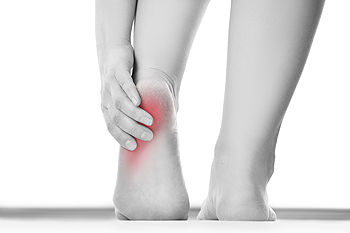 There is a thick portion of tissue that runs along the bottom of the foot and connects the toes to the heel bone, which is referred to as the plantar fascia. If this should become injured, inflammation may occur, leading to a condition known as plantar fasciitis, which typically causes severe pain and discomfort. Research has shown the main purpose of the plantar fascia is to maintain adequate support to the arch of the foot in addition to acting like a shock absorber for the body. Some of the reasons why this ailment could develop may be from wearing shoes that do not have proper cushioning, standing for extended periods of time, or participating in sporting activities that include running or jumping. Patients who have plantar fasciitis may experience pain that radiates from the heel and may gradually increase over time. If you are afflicted with this painful condition, please counsel with a podiatrist who can properly diagnose and treat this condition.
There is a thick portion of tissue that runs along the bottom of the foot and connects the toes to the heel bone, which is referred to as the plantar fascia. If this should become injured, inflammation may occur, leading to a condition known as plantar fasciitis, which typically causes severe pain and discomfort. Research has shown the main purpose of the plantar fascia is to maintain adequate support to the arch of the foot in addition to acting like a shock absorber for the body. Some of the reasons why this ailment could develop may be from wearing shoes that do not have proper cushioning, standing for extended periods of time, or participating in sporting activities that include running or jumping. Patients who have plantar fasciitis may experience pain that radiates from the heel and may gradually increase over time. If you are afflicted with this painful condition, please counsel with a podiatrist who can properly diagnose and treat this condition.
Plantar fasciitis is a common foot condition that is often caused by a strain injury. If you are experiencing heel pain or symptoms of plantar fasciitis, contact one of our podiatrists from New Jersey Foot & Ankle Centers. Our doctors can provide the care you need to keep you pain-free and on your feet.
What Is Plantar Fasciitis?
Plantar fasciitis is one of the most common causes of heel pain. The plantar fascia is a ligament that connects your heel to the front of your foot. When this ligament becomes inflamed, plantar fasciitis is the result. If you have plantar fasciitis you will have a stabbing pain that usually occurs with your first steps in the morning. As the day progresses and you walk around more, this pain will start to disappear, but it will return after long periods of standing or sitting.
What Causes Plantar Fasciitis?
- Excessive running
- Having high arches in your feet
- Other foot issues such as flat feet
- Pregnancy (due to the sudden weight gain)
- Being on your feet very often
There are some risk factors that may make you more likely to develop plantar fasciitis compared to others. The condition most commonly affects adults between the ages of 40 and 60. It also tends to affect people who are obese because the extra pounds result in extra stress being placed on the plantar fascia.
Prevention
- Take good care of your feet – Wear shoes that have good arch support and heel cushioning.
- Maintain a healthy weight
- If you are a runner, alternate running with other sports that won’t cause heel pain
There are a variety of treatment options available for plantar fasciitis along with the pain that accompanies it. Additionally, physical therapy is a very important component in the treatment process. It is important that you meet with your podiatrist to determine which treatment option is best for you.
If you have any questions, please feel free to contact our office located in Oradell, NJ . We offer the newest diagnostic and treatment technologies for all your foot care needs.
Read more about Plantar Fasciitis
Poor Circulation and Cold Feet
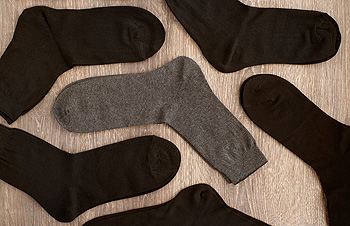 Some people feel that they can never get their feet to warm up. This may mean that their feet always feel cold to the touch, cold to the individual, or both. This is oftentimes due to poor circulation throughout the body, especially to one’s feet. There are some medical conditions that cause poor circulation, but daily behaviors can also influence the severity of one’s cold feet. Examples of these behaviors are exercising, smoking, and drinking. Exercising has a positive impact on regulating the temperature of your feet, while smoking and drinking have the opposite effect. In most cases, cold feet are at most a nuisance and can be remedied with simple changes like wearing thicker socks. Although, there are cases where cold feet coupled with certain symptoms may mean that something more serious is going on. If you have cold feet as well as sores on your feet, extreme fatigue, unexplained weight changes, fever, or joint pain, then it is recommended you consult a podiatrist to fully understand what is going on.
Some people feel that they can never get their feet to warm up. This may mean that their feet always feel cold to the touch, cold to the individual, or both. This is oftentimes due to poor circulation throughout the body, especially to one’s feet. There are some medical conditions that cause poor circulation, but daily behaviors can also influence the severity of one’s cold feet. Examples of these behaviors are exercising, smoking, and drinking. Exercising has a positive impact on regulating the temperature of your feet, while smoking and drinking have the opposite effect. In most cases, cold feet are at most a nuisance and can be remedied with simple changes like wearing thicker socks. Although, there are cases where cold feet coupled with certain symptoms may mean that something more serious is going on. If you have cold feet as well as sores on your feet, extreme fatigue, unexplained weight changes, fever, or joint pain, then it is recommended you consult a podiatrist to fully understand what is going on.
While poor circulation itself isn’t a condition; it is a symptom of another underlying health condition you may have. If you have any concerns with poor circulation in your feet contact one of our podiatrists of New Jersey Foot & Ankle Centers. Our doctors will treat your foot and ankle needs.
Poor Circulation in the Feet
Peripheral artery disease (PAD) can potentially lead to poor circulation in the lower extremities. PAD is a condition that causes the blood vessels and arteries to narrow. In a linked condition called atherosclerosis, the arteries stiffen up due to a buildup of plaque in the arteries and blood vessels. These two conditions can cause a decrease in the amount of blood that flows to your extremities, therefore resulting in pain.
Symptoms
Some of the most common symptoms of poor circulation are:
- Numbness
- Tingling
- Throbbing or stinging pain in limbs
- Pain
- Muscle Cramps
Treatment for poor circulation often depends on the underlying condition that causes it. Methods for treatment may include insulin for diabetes, special exercise programs, surgery for varicose veins, or compression socks for swollen legs.
As always, see a podiatrist as he or she will assist in finding a regimen that suits you. A podiatrist can also prescribe you any needed medication.
If you have any questions, please feel free to contact our office located in Oradell, NJ . We offer the newest diagnostic and treatment technologies for all your foot care needs.
Read more about Causes Symptoms and Treatment for Poor Circulation in the FeetPreventing Athlete's Foot
 Everyone relies on their feet to get them through the day, but active people tend to rely on them a little more. Paying attention to the condition of your feet is important for overall foot health and care. Active people are more likely to face symptoms of athlete’s foot, because they sweat more than the average person; these symptoms include foot odor and fungus growth. Feet are loaded with sweat glands, which can produce up to a half-pint of moisture a day. Keeping feet dry and clean is the first step in preventing odor; ways to do this include washing your feet daily, regularly changing socks, and alternating footwear. The inside of shoes provides the perfect breeding ground for fungus. The damp and dark environment attracts organisms that cause athlete’s foot. The methods used for preventing foot odor also protect against festering organisms that lead to fungus. If you begin to notice distinct foot odor or fungus growth, it is advised to consult with a podiatrist so you can properly treat this condition and prevent the fungus from spreading further.
Everyone relies on their feet to get them through the day, but active people tend to rely on them a little more. Paying attention to the condition of your feet is important for overall foot health and care. Active people are more likely to face symptoms of athlete’s foot, because they sweat more than the average person; these symptoms include foot odor and fungus growth. Feet are loaded with sweat glands, which can produce up to a half-pint of moisture a day. Keeping feet dry and clean is the first step in preventing odor; ways to do this include washing your feet daily, regularly changing socks, and alternating footwear. The inside of shoes provides the perfect breeding ground for fungus. The damp and dark environment attracts organisms that cause athlete’s foot. The methods used for preventing foot odor also protect against festering organisms that lead to fungus. If you begin to notice distinct foot odor or fungus growth, it is advised to consult with a podiatrist so you can properly treat this condition and prevent the fungus from spreading further.
Athlete’s Foot
Athlete’s foot is often an uncomfortable condition to experience. Thankfully, podiatrists specialize in treating athlete’s foot and offer the best treatment options. If you have any questions about athlete’s foot, consult with one of our podiatrists from New Jersey Foot & Ankle Centers. Our doctors will assess your condition and provide you with quality treatment.
What Is Athlete’s Foot?
Tinea pedis, more commonly known as athlete’s foot, is a non-serious and common fungal infection of the foot. Athlete’s foot is contagious and can be contracted by touching someone who has it or infected surfaces. The most common places contaminated by it are public showers, locker rooms, and swimming pools. Once contracted, it grows on feet that are left inside moist, dark, and warm shoes and socks.
Prevention
The most effective ways to prevent athlete’s foot include:
- Thoroughly washing and drying feet
- Avoid going barefoot in locker rooms and public showers
- Using shower shoes in public showers
- Wearing socks that allow the feet to breathe
- Changing socks and shoes frequently if you sweat a lot
Symptoms
Athlete’s foot initially occurs as a rash between the toes. However, if left undiagnosed, it can spread to the sides and bottom of the feet, toenails, and if touched by hand, the hands themselves. Symptoms include:
- Redness
- Burning
- Itching
- Scaly and peeling skin
Diagnosis and Treatment
Diagnosis is quick and easy. Skin samples will be taken and either viewed under a microscope or sent to a lab for testing. Sometimes, a podiatrist can diagnose it based on simply looking at it. Once confirmed, treatment options include oral and topical antifungal medications.
If you have any questions, please feel free to contact our office located in Oradell, NJ . We offer the newest diagnostic and treatment technologies for all your foot care needs.
Falls Prevention Classes
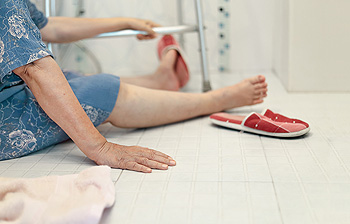 The fear of falling is something that plagues many older adults. Falls can result in many other health complications, such as broken bones that lead to more serious issues. Recovery can be a long and straining process, so it is best to practice fall prevention in order to avoid these stressful inconveniences. There are techniques and behaviors one can utilize to prevent falling. Some communities have partnered with organizations to offer falls prevention classes for anyone who is interested. These programs hope to lessen the fear surrounding falling, while simultaneously increasing the activity of older adults. Sometimes, the fear of falling causes some to lower their activity level, which results in weakness that can cause more damage if a fall does occur. If you fear falling or have any further questions about falls prevention, then it is recommended you consult with a podiatrist for more information.
The fear of falling is something that plagues many older adults. Falls can result in many other health complications, such as broken bones that lead to more serious issues. Recovery can be a long and straining process, so it is best to practice fall prevention in order to avoid these stressful inconveniences. There are techniques and behaviors one can utilize to prevent falling. Some communities have partnered with organizations to offer falls prevention classes for anyone who is interested. These programs hope to lessen the fear surrounding falling, while simultaneously increasing the activity of older adults. Sometimes, the fear of falling causes some to lower their activity level, which results in weakness that can cause more damage if a fall does occur. If you fear falling or have any further questions about falls prevention, then it is recommended you consult with a podiatrist for more information.
Preventing falls among the elderly is very important. If you are older and have fallen or fear that you are prone to falling, consult with one of our podiatrists from New Jersey Foot & Ankle Centers. Our doctors will assess your condition and provide you with quality advice and care.
Every 11 seconds, an elderly American is being treated in an emergency room for a fall related injury. Falls are the leading cause of head and hip injuries for those 65 and older. Due to decreases in strength, balance, senses, and lack of awareness, elderly persons are very susceptible to falling. Thankfully, there are a number of things older persons can do to prevent falls.
How to Prevent Falls
Some effective methods that older persons can do to prevent falls include:
- Enrolling in strength and balance exercise program to increase balance and strength
- Periodically having your sight and hearing checked
- Discuss any medications you have with a doctor to see if it increases the risk of falling
- Clearing the house of falling hazards and installing devices like grab bars and railings
- Utilizing a walker or cane
- Wearing shoes that provide good support and cushioning
- Talking to family members about falling and increasing awareness
Falling can be a traumatic and embarrassing experience for elderly persons; this can make them less willing to leave the house, and less willing to talk to someone about their fears of falling. Doing such things, however, will increase the likelihood of tripping or losing one’s balance. Knowing the causes of falling and how to prevent them is the best way to mitigate the risk of serious injury.
If you have any questions, please feel free to contact our office located in Oradell, NJ . We offer the newest diagnostic and treatment technologies for all your foot care needs.
Achilles Tendinitis Could Be the Cause of Your Ankle Pain
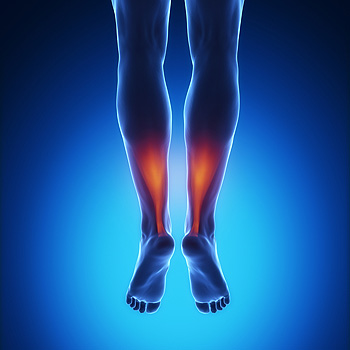 The Achilles tendon is the tissue that connects calf muscles to the heel bone, and overuse of this tendon can result in Achilles tendinitis. This tendon is used while walking, running, jumping, and performing most other actions associated with foot movement. High-intensity sports are often the cause of this condition. It is common in middle-aged adults that run, play tennis, or play basketball. The pain associated with Achilles tendinitis usually starts with a minor ache above the heel after a sports activity. This pain can escalate and become episodic in relation to increased physical movement. Tenderness and stiffness may also be felt the next morning but will fade throughout the day. This pain is a result of straining the Achilles tendon, so feeling pain is a signal to slow down use of it. If you reduce the amount of activity involving this tendon and the pain persists, then it is highly suggested you consult with a podiatrist to learn about treatment options.
The Achilles tendon is the tissue that connects calf muscles to the heel bone, and overuse of this tendon can result in Achilles tendinitis. This tendon is used while walking, running, jumping, and performing most other actions associated with foot movement. High-intensity sports are often the cause of this condition. It is common in middle-aged adults that run, play tennis, or play basketball. The pain associated with Achilles tendinitis usually starts with a minor ache above the heel after a sports activity. This pain can escalate and become episodic in relation to increased physical movement. Tenderness and stiffness may also be felt the next morning but will fade throughout the day. This pain is a result of straining the Achilles tendon, so feeling pain is a signal to slow down use of it. If you reduce the amount of activity involving this tendon and the pain persists, then it is highly suggested you consult with a podiatrist to learn about treatment options.
Ankle pain can have many different causes and the pain may potentially be serious. If you have ankle pain, consult with one of our podiatrists from New Jersey Foot & Ankle Centers. Our doctors will assess your condition and provide you with quality foot and ankle treatment.
Ankle pain is any condition that causes pain in the ankle. Due to the fact that the ankle consists of tendons, muscles, bones, and ligaments, ankle pain can come from a number of different conditions.
Causes
The most common causes of ankle pain include:
- Types of arthritis (rheumatoid, osteoarthritis, and gout)
- Ankle sprains
- Broken ankles
- Achilles tendinitis
- Achilles tendon rupture
- Stress fractures
- Tarsal tunnel syndrome
- Plantar fasciitis
Symptoms
Symptoms of ankle injury vary based upon the condition. Pain may include general pain and discomfort, swelling, aching, redness, bruising, burning or stabbing sensations, and/or loss of sensation.
Diagnosis
Due to the wide variety of potential causes of ankle pain, podiatrists will utilize a number of different methods to properly diagnose ankle pain. This can include asking for personal and family medical histories and of any recent injuries. Further diagnosis may include sensation tests, a physical examination, and potentially x-rays or other imaging tests.
Treatment
Just as the range of causes varies widely, so do treatments. Some more common treatments are rest, ice packs, keeping pressure off the foot, orthotics and braces, medication for inflammation and pain, and surgery.
If you have any questions, please feel free to contact our office located in Oradell, NJ . We offer the newest diagnostic and treatment technologies for all your foot care needs.
Stretching May Prevent Injuries to the Feet and Ankles
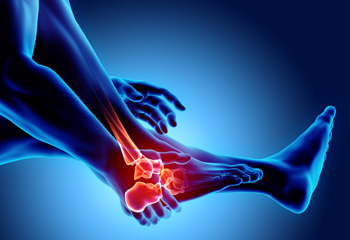 There are many people who enjoy sporting activities which may involve some type of running or jogging, and may be familiar with the pain and agony that often accompanies foot and ankle injuries. These may include the uncomfortable conditions that are known as plantar fasciitis, ankle fractures or sprains, and Achilles tendonitis. The importance of properly stretching the muscles before embarking on the chosen sport is crucial in helping to avoid painful trauma to the feet and ankles. These techniques may include a gradual increase in time spent pursuing these activities, which may aid in strengthening muscles and improving mobility. Research has suggested that proper running shoes should be replaced approximately every six months, and this will enable the feet to have proper cushioning. If you are experiencing pain or have endured an injury to the feet or ankles, it is suggested to seek the counsel of a podiatrist who can offer proper treatment advice.
There are many people who enjoy sporting activities which may involve some type of running or jogging, and may be familiar with the pain and agony that often accompanies foot and ankle injuries. These may include the uncomfortable conditions that are known as plantar fasciitis, ankle fractures or sprains, and Achilles tendonitis. The importance of properly stretching the muscles before embarking on the chosen sport is crucial in helping to avoid painful trauma to the feet and ankles. These techniques may include a gradual increase in time spent pursuing these activities, which may aid in strengthening muscles and improving mobility. Research has suggested that proper running shoes should be replaced approximately every six months, and this will enable the feet to have proper cushioning. If you are experiencing pain or have endured an injury to the feet or ankles, it is suggested to seek the counsel of a podiatrist who can offer proper treatment advice.
Foot and ankle trauma is common among athletes and the elderly. If you have concerns that you may have experienced trauma to the foot and ankle, consult with one of our podiatrists from New Jersey Foot & Ankle Centers. Our doctors will assess your condition and provide you with quality foot and ankle treatment.
Foot and ankle trauma cover a range of injuries all over the foot; common injuries include:
- Broken bones
- Muscle strains
- Injuries to the tendons and ligaments
- Stress fractures
Symptoms
Symptoms of foot and ankle injuries vary depending on the injury, but more common ones include:
- Bruising
- Inflammation/ Swelling
- Pain
Diagnosis
To properly diagnose the exact type of injury, podiatrists will conduct a number of different tests. Some of these include sensation and visual tests, X-rays, and MRIs. Medical and family histories will also be taken into account.
Treatment
Once the injury has been diagnosed, the podiatrist can than offer the best treatment options for you. In less severe cases, rest and keeping pressure off the foot may be all that’s necessary. Orthotics, such as a specially made shoes, or immobilization devices, like splints or casts, may be deemed necessary. Finally, if the injury is severe enough, surgery may be necessary.
If you have any questions, please feel free to contact our office located in Oradell, NJ . We offer the newest diagnostic and treatment technologies for all your foot care needs.
Read more about Foot and Ankle TraumaFoot and Ankle Trauma
Broken Feet
A broken foot can either refer to a fracture or a straight break. The location of any break can tell you how the break happened. Toes, for instance, break typically as a result of something being kicked hard and with great force. Heel breaks almost always are a result of an improper landing from a tall height. Twists or sprains are the other two frequent occurrences. As with all usual breaks, they result from unexpected accident or sudden injury. As with stress fractures, breaks form as a process over time from repeated stress on already present cracks. Runners, dancers, and gymnasts are the usual athletes who receive this type of break. Stress fractures result from incredible pressure on the feet. It is no surprise these athletes bear the majority of reported fractures.
Pain, swelling, bruising, and redness are all indicative of the typical symptoms from a broken foot. Severe pain—to the point of not being able to walk—usually depends on the location of the break in the foot. Toes are on the lower scale of pain threshold, but heels are high, as are a few other particular bones. As the severity of the broken foot increases, symptoms like blueness, numbness, misshaping of the foot, cuts, or deformities will become apparent. These symptoms indicate the need to see a medical professional with access to an x-ray facility.
Prior to seeing a specialist, precautions should be taken to reduce pain and swelling. Elevate and stabilize the foot, and refrain from moving it. Immobilization of the foot is the next priority, so creating a homemade splint is acceptable. Keep in mind that while creating a splint, any increase of pain or cutting off blood circulation means that the splint should be removed immediately. Use ice to decrease swelling and relieve pain symptoms.
When dealing with a medical center, the patient should note that the treatment can vary. The treatment will depend on the severity of the fracture and the cause of the break. Crutches, splits, or casts are common treatments while surgery has been known to be used in more severe cases in order to repair the break in the bones.
Broken Ankles
Broken ankles are a serious injury that can lead to an inability to walk, function, and also cause a significant amount of pain. A broken ankle is a break in one of the three bones in your body that connect at the ankle joint, the tibia, the fibula, and the talus. The tibia and fibula are your two primary leg bones that connect at the knee, which sits directly upon the talus bone. This is protected by a fibrous membrane that allows for movement in our ankle joint. A broken ankle is usually caused by the foot rolling under or twisting too far, causing one of these three bones to snap.
A broken ankle is different from an ankle sprain, which occurs when the ligaments are ripped or torn but no bones have been broken. A sprain can still be very severe, causing bruising in the foot and an inability to hold your own weight, much like a broken ankle would. If you’re unable to stand, and suspect that you have a broken ankle, the first thing to do would be to get an immediate x-ray to determine the severity of the break.
A common cause of broken ankles is when the ankle is rolled over with enough pressure to break the bones. This usually happens during exercise, sports, or other physical activities. Another common cause is a fall or jump from a tall height.
One immediate treatment for pain relief is elevating the feet above your head to reduce blood flow to the injured area. You can also apply ice packs to your ankles to help reduce swelling, redness, inflammation, and pain. After these initial steps, getting a cast and staying off your feet as much as possible will aid in the recovery of the broken ankle. The less movement and stress the ankle has to endure, the more complete it will heal. A doctor can determine if surgery is needed in order to heal correctly. In these cases, an operation may be the only option to ensure the ability to walk properly again, followed by physical therapy and rehabilitation.
It is highly important to determine if surgery is needed early on, because a broken ankle can become much more severe than you realize. If not professionally treated, the broken ankle will inhibit your walking, daily functioning, and produce a large amount of pain. Treating your broken ankle early on will help prevent further damage to it.
Is Foot Therapy Effective?
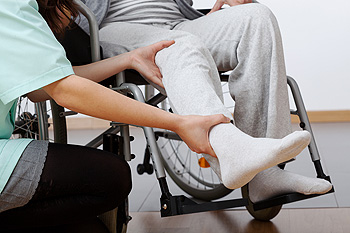 If an injury should occur to the foot or ankle, foot therapy may be an avenue that is pursued to obtain mild relief. There are many foot conditions that would benefit from having physical therapy performed, and these may include plantar fasciitis, or foot and ankle stress fractures. Some patients find it helpful to use this form of therapy to aid in recovering from foot or ankle surgery, and it may help in regaining full range of motion. Additionally, flexibility and overall strength in the feet and ankles may improve when specific muscles are stretched. If you would like to know more about the benefits of foot therapy, please consult with a podiatrist who can properly guide you.
If an injury should occur to the foot or ankle, foot therapy may be an avenue that is pursued to obtain mild relief. There are many foot conditions that would benefit from having physical therapy performed, and these may include plantar fasciitis, or foot and ankle stress fractures. Some patients find it helpful to use this form of therapy to aid in recovering from foot or ankle surgery, and it may help in regaining full range of motion. Additionally, flexibility and overall strength in the feet and ankles may improve when specific muscles are stretched. If you would like to know more about the benefits of foot therapy, please consult with a podiatrist who can properly guide you.
Foot therapy is often necessary for those recovering from either foot deformities or foot injuries. If you have concerns regarding therapy, one of our podiatrists of New Jersey Foot & Ankle Centers. Our doctors can provide the care you need to keep you pain-free and on your feet.
Most Common Injuries
People who are active or athletes are prone to a variety of injuries. Therefore, it is often important to take part in physical therapy in order to quickly get back on the right track.
What to Do When Injured
Physical Therapy – This specialized treatment will focus on the affected area, speeding up recovery and the overall healing process. It is a proven method that has helped millions of people return from any injury.
During physical therapy you will undergo regimented training to get back into full form. Training is often very difficult, especially at first when the foot feels weak. Physical therapy often involves:
Basic stretching and twisting exercises – getting the feet’s mobility and flexibility up.
Massaging – the therapist will massage the injured area in order to activate the muscles and relax them.
Strengthening Exercises – this allows the muscles in the affected area to regain their full strength, a vital step towards full recovery.
If you have any questions please feel free to contact our office located in Oradell, NJ . We offer the newest diagnostic tools and technology to treat your foot and ankle needs.
Foot Therapy for Sports Injuries
Foot Therapy for Sports Injuries
Athletes are used to engaging in high-intensity workouts. Consequently, athletes are at an increased risk for enduring foot or ankle injuries. The most common way to treat these types of injuries is the RICE method (Rest, Ice, Compression, and Elevation). However, braces and casts may be required in some cases. If you are suffering from any of these injuries, it is best that you seek help from your podiatrist right away.
Achilles Tendinitis
Achilles tendinitis is a type of overuse injury of the Achilles tendon, which is the tendon connecting the calf muscles to the heel. This type of injury commonly occurs in runners who increase the intensity of their workouts. Symptoms for this condition start off as a mild ache in the back leg or above the heel. Some people experience tenderness around the area in the morning, however this feeling tends to improve over time. If you suspect you have Achilles tendinitis, you doctor may order an x-ray to show whether your Achilles tendon has calcified. Common treatment options for this condition include rest, ice, exercise, and non-steroidal anti-inflammatory medication.
Plantar Fasciitis
Plantar Fasciitis is a condition that is commonly found in women. It is a painful condition that occurs when the bands of tissue that connect the heel to the toes become inflamed. Symptoms for plantar fasciitis are heel pain that worsens in the morning and improves throughout the day with activity. Your podiatrist will diagnose plantar fasciitis by checking for tender areas on your foot. In rare cases, an x-ray may be required for a more thorough examination. There are various treatment options that may be used to help someone with this ailment. Depending on the specific case, some of these options include: physical therapy, shockwave therapy, and in rare cases, surgery.
Stress Fractures
Stress fractures are tiny cracks in the bone that occur due to repetitive force. These fractures are typically the result of overuse injuries such as repeatedly running and jumping. Symptoms of a stress fracture include pain when exercising, tenderness, and mild swelling. To diagnose a stress fracture, your doctor will likely ask you a series of questions about your overall health and the activities you are involved in. Next, an x-ray will likely be performed to check for the fracture. In some cases, fractures don’t appear on x-rays until weeks afterward. In these cases, an MRI or a bone scan may be required. Typical stress fractures may be treated by resting the area and taking a break from highly intense activities.
Ankle Sprain
Ankle sprains occur when the ligaments that support the ankle are stretched far beyond their limits. These injuries occur when you roll, twist, or turn your ankle in an awkward way. Ligaments are essential in helping us move around because they are responsible for stabilizing the joints. Usually, sprained ankles occur due to ligaments on the outer part of the ankle becoming stretched. Symptoms of ankle sprains are swelling, bruising, instability of the ankle, and restricted range of motion. Normally, when people sprain their ankle, they will hear a popping sound during the injury. Depending on the severity, ankle sprains are graded based on how much damage has occurred to the ligaments. Grade 1 is mild, grade 2 is moderate, and grade 3 is severe.
Featured Articles
- July 2025
- June 2025
- May 2025
- April 2025
- March 2025
- February 2025
- January 2025
- December 2024
- November 2024
- October 2024
- September 2024
- August 2024
- July 2024
- June 2024
- May 2024
- April 2024
- March 2024
- February 2024
- January 2024
- December 2023
- November 2023
- October 2023
- September 2023
- August 2023
- July 2023
- June 2023
- May 2023
- April 2023
- March 2023
- February 2023
- January 2023
- December 2022
- November 2022
- October 2022
- September 2022
- August 2022
- July 2022
- June 2022
- May 2022
- April 2022
- March 2022
- February 2022
- January 2022
- December 2021
- November 2021
- October 2021
- September 2021
- August 2021
- July 2021
- June 2021
- May 2021
- April 2021
- March 2021
- February 2021
- December 2020
- November 2020
- August 2020
- June 2020
- April 2020
- March 2020
- February 2020
- January 2020
- December 2019
- November 2019
- October 2019
- September 2019
- August 2019
- July 2019
- June 2019
- May 2019
- April 2019
- March 2019
- February 2019
- January 2019
- December 2018
- November 2018
- October 2018
- September 2018
- August 2018
- June 2018
- May 2018
- April 2018
- March 2018
- February 2018
- January 2018
- December 2017
- November 2017
- October 2017
- September 2017
- August 2017
- July 2017
- June 2017
- May 2017
- April 2017
- March 2017
- February 2017
- January 2017

